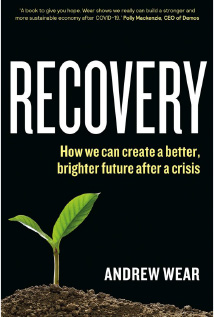
Author:
Andrew Wear
Published by:
Black Inc
ISBN : 9781760643089
Recovery from the COVID-19 pandemic seems to be something that has dropped from the imagination or purview of people. There seems to be a sense that we have thrown off the restrictions and now let’s just get on with it. But many people are still recovering; physically, emotionally, economically and existentially. It is very ‘old school’ thinking, almost akin to ‘the bushfires are out, we are done with them, let’s just get on with that’. In the emergency management sector we have known for many years that this cannot be the approach.
Part of a recovery manager’s or strategist’s job is to start thinking about how things will unfold at the time when things are going the way of the pear. Another part of the job is to be able to think over the horizon. Too often this doesn’t happen.
Fortunately, author Andrew Wear was doing this as the pandemic unfolded around him, his family and us. It is refreshing to have a new and experienced set of eyes on age-old problems. Recovery: How we can create a better, brighter future after crisis is an excellent and timely book, given the various calamities that we have been experiencing. While the book is prompted by the pandemic crisis, with a historian’s keen eye, he looks across a range of calamities and tries to find what helps with recovery.
His guidance is very good and although he doesn’t draw on Australia’s National Principles for Disaster Recovery1, what he is saying is very similar. I was really pleased to see him put social determinants of health and mental health and community engagement at the centre of his thoughts. This is what really matters.
I was also pleased to see him call for a commission of inquiry. Commissions of inquiry, when conducted properly and openly, are excellent sources of lessons. We should be learning from this event. It isn’t the last one we will see and, as the Red Cross World Disasters Report 20222 indicated, levels of preparedness for future pandemics are surprisingly low.
My one concern lies with the chapter on ‘natural’ disasters and the 2004 Indian Ocean earthquake and tsunami, which appeared to read as though rapid rebuilding rates equate with better recovery. We know that people will rebuild at different rates depending on where they are practically and psychologically. However, Wear does reiterate (in the guidance sections) the importance of getting all the policy and assistance settings in place quickly so that people know what they are dealing with. The guidance sections are excellent, each finishing off with 5 steps forward. These are bite-sized guidance notes for the time-poor, harried, overwhelmed recovery manager who just wants to know ‘what do I have to do?’.
This book is a very accessible and engaging read and I highly commended it to policy makers, practitioners and people with a keen interest in public policy.


